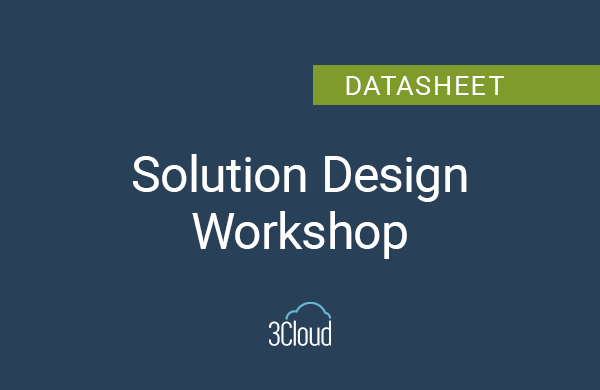Cloud services have changed the way businesses operate, offering scalability, flexibility, and cost savings. With this transition to the cloud comes the critical responsibility of ensuring the security of sensitive data and assets. Evaluating the security measures of a cloud service provider is a vital step in safeguarding your organization’s digital assets. Understanding the key aspects of evaluating cloud service provider security and the measures they implement is crucial for future success of your organization.
Understanding Cloud Security Review
The path to evaluating a cloud service provider’s security begins with gaining a comprehensive understanding of their security protocols. This initial review involves a careful assessment of their security policies, practices, and technologies to identify potential vulnerabilities and risks.
Which Standards are Used in Assessing Cloud Service Provider Security?
Two widely recognized standards play a pivotal role in assessing the security of cloud service providers:
1. ISO 27001: Information Security Management System (ISMS). ISO 27001 is an internationally accepted standard that outlines the requirements for establishing an Information Security Management System (ISMS). This framework ensures a systematic approach to managing sensitive company information, mitigating risks, and maintaining data confidentiality and integrity.
2. SOC 2: Controls for Security, Availability, and Confidentiality. Developed by the American Institute of CPAs (AICPA), SOC 2 sets the criteria for evaluating a service organization’s controls related to security, availability, processing integrity, confidentiality, and privacy. It provides a thorough assessment of a provider’s operational effectiveness and commitment to safeguarding customer data.
Common Security Methods Employed by Cloud Providers
Cloud service providers adopt several fundamental security methods to protect customer data and ensure system integrity, among them Data Encryption and Access Controls and Identity and Access Management (IAM).
Data encryption is a cornerstone of cloud security. Cloud providers use encryption techniques to protect data both during transit and while at rest, ensuring that even if unauthorized access takes place, the data remains incomprehensible and unusable. Robust access controls and IAM systems are essential for managing user permissions and ensuring that only authorized users can access resources and data. This prevents potential data breaches from unauthorized access.
What is the First Step in Evaluating Cloud Security?
To thoroughly evaluate a cloud service provider’s security measures, consider the following steps:
1. Customer Security Testing and Audits: Check up on security. You should have the option to conduct security testing and audits of the cloud infrastructure. This enables validation of the provider’s security claims and ensures alignment with the specific security requirements.
2. Backup and Disaster Recovery Processes: Prepare for the worst. In the face of system failures or disasters, robust backup and disaster recovery processes are crucial. Inquire about the cloud provider’s strategies for data loss prevention, data availability, and business continuity.
3. Get it in writing: Service Level Agreements (SLAs) and Security Guarantees. A reliable cloud service provider should offer SLAs that include security guarantees. These agreements define the level of security protection customers can expect and outline remedies in the event of security-related breaches.
4. Intrusion Detection and Prevention: Safeguarding against cyber threats requires effective intrusion detection and prevention mechanisms. Assess the provider’s ability to monitor and respond to potential security breaches promptly.
5. Multi-Factor Authentication (MFA) and Identity Management: A robust identity and access management system, including multi-factor authentication (MFA), is critical for preventing unauthorized access. Evaluate the provider’s IAM controls and MFA offerings.
6. Physical Security Measures: Physical security measures at cloud data centers are as vital as digital security. Inquire about the provider’s protocols for physical security and access controls to protect the underlying infrastructure.
7. Data Isolation on Shared Infrastructure: As multiple customers share cloud infrastructure, understanding how the provider ensures data isolation and prevents unauthorized access between tenants is essential for maintaining data privacy. Your space, your data.
What Physical Security Measures are in Place to Protect Data Centers and Infrastructure?
The safeguarding of data centers and infrastructure involves several critical physical security measures including 24/7 surveillance and biometric access controls. Data centers are equipped with advanced surveillance systems, including CCTV cameras and access control systems, to monitor and restrict physical access to sensitive areas. Biometric authentication mechanisms like fingerprint scanning or iris recognition are employed to ensure that only authorized personnel can enter critical areas.
How is Customer Data Isolated from Other Users on Shared Infrastructure?
To ensure customer data isolation on shared infrastructure, cloud providers implement the following techniques:
1. Virtualization and Hypervisor. Cloud providers use virtualization technologies and hypervisors to create isolated virtual machines (VMs) for each customer. This prevents data and resource sharing between different tenants, enhancing data security.
2. Network Segmentation. Customer data is logically segregated through network segmentation techniques, incorporating firewalls and VLANs to isolate traffic and prevent unauthorized access between customers.
Evaluating Cloud Service Provider Security: A Checklist
The following checklist outlines key considerations and insights for assessing the security of cloud service providers:
Validate Adherence to Standards and Frameworks
- Seek evidence of adherence to recognized standards such as ISO-27001, ISO-27002, and ISO-27017, indicating the provider follows established security best practices and proactively mitigates risks.
- Look for ISO-27018 compliance, which signifies effective protection of personally identifiable information.
- Consider compliance with relevant government and regulatory protocols, including GDPR, CCPA, HIPAA, and PCI DSS.
Scrutinize Operational and Business Processes
- Assess provided documentation on compliance with corporate, government, and industry guidelines, but also request additional detailed information.
- Look for third-party security reports from independent auditors as well as access to security events and log data as part of the service-level agreement (SLA).
- Evaluate the provider’s willingness to collaborate and share security insights.
Verify Authentication and Identity Controls
- Recognize the increased access risks introduced by cloud usage and prioritize providers with robust authentication and identity controls.
- Ensure support for multi-factor authentication (MFA) and real-time identity monitoring, including Cloud Infrastructure Entitlements Management (CIEM) tools.
Understand Vendor Governance and Access Policies
- Establish clear governance and access policies to define the responsibilities and authorities of both your organization and the cloud provider.
- Highlight the importance of outlining the extent of control the provider possesses over your data and workloads.
Ensure Access to Corporate Audit Trails
- Secure direct access to corporate audit trail data for complete visibility into cloud transactions.
- Prioritize providers that offer this level of transparency, as it is vital for accountability and tracking.
Grasp Internal Management Resources
- Understand the shared responsibility model and how the cloud provider manages security.
- Familiarize yourself with the cloud provider’s security frameworks, which may include governance controls, compliance reporting, and identity management protocols.
Review Cloud Service Level Agreements (SLAs)
- Thoroughly examine the cloud SLA, which dictates the nature of the service relationship and outlines security considerations.
- Involve security leaders, legal teams, and key decision-makers to ensure a comprehensive understanding of the SLA’s content.
Understand Security Service Pricing
- Determine whether additional security services are required and weigh their value against potential subscription fees.
- Consult security advisors to decide if advanced security services justify the cost or if standard tools suffice.
Investigate Data Storage Locations
- Classify your data according to its security and confidentiality needs before migrating to the cloud.
- Scrutinize where your data will be stored to ensure it aligns with your security requirements.
Assess Third-Party Integration Capabilities
- Confirm that the cloud platform supports third-party security integrations for a flexible and customized security approach.
Evaluate Uptime and Performance
- Examine historical uptime and performance metrics to gauge the cloud provider’s reliability and responsiveness during outages.
Investigate Data Breach and Loss History
- Analyze the context, scale, and reasons behind any past data breaches or losses by the cloud provider.
- Consider the level of shared responsibility and the provider’s track record in mitigating incidents.
Analyze Backup and Disaster Recovery Processes
- Prioritize providers with robust backup and disaster recovery processes to safeguard against outages and disruptions.
Verify Migration Services and Support
- Assess whether the cloud provider offers migration services to facilitate a seamless transition from on-premises environments. 3Cloud can help you build and manage a cohesive hybrid, multi-cloud security program, reach out today.
Review Exit Planning and Avoid Vendor Lock-In
- Plan for contingencies and ensure that the cloud provider does not impose vendor lock-in, which could hinder future transitions.
By addressing these critical factors, you can effectively assess the security measures of potential cloud service providers and make informed decisions that align with your company’s security and business objectives.
As Microsoft’s top Azure partner on the planet, 3Cloud is experienced in providing world class security. Incorporating the cloud into your current enterprise security is more than simply adding a few more controls or solutions. It involves an appraisal of your resources and specific business needs so that your organization can develop a new approach to your cloud security strategy.
We can help you manage a cohesive hybrid, multi-cloud security program, necessary to establish visibility and management. Our experts can show you how to integrate the appropriate controls and establish an effective threat management system to safeguard and monitor your data and applications in the cloud. Contact us to start the conversation about cloud security today.




